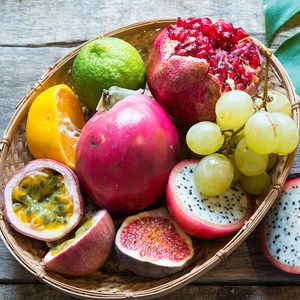
We’ve all seen them—neon colored balls with green and pink spikes, casually placed on supermarket shelves next to the oranges and apples (This is why your grocery store sprays the produce). They look pretty, but what the heck are they? And what do you do with them? Let’s find out!
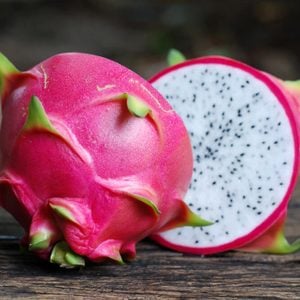
Dragon Fruit
Perhaps because of its intimidating outer shell, dragon fruit is most frequently seen as a flavoring for cocktails or smoothies. This bright pink and spiky ball of fruit has a similar texture to kiwi, with tiny black seeds mixed in with the white and fruity flesh. Try ’em out in these quick and easy smoothie recipes.
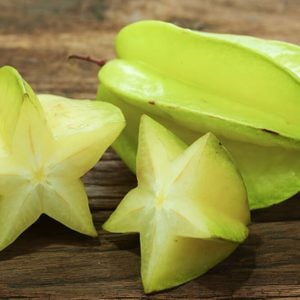
Starfruit
Starfruit may not look like much from the outside, but when cut on the cross section it’s clear where this tasty fruit gets its name. The fruit has a bright yellow color and tastes like a sweet and tart grape. To prepare, slice the fruit into pieces along the ridges and remove the seeds from the center. Eat it raw or use it to garnish on these sweet Passion Fruit Hurricanes.
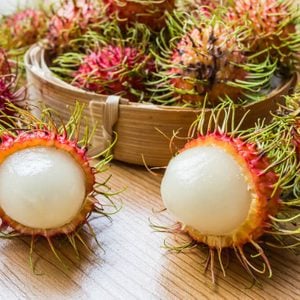
Rambutan
Rambutan is quite possibly one of the more intimidating fruits on the list—it is a small round ball with spiky red, pink and green hairs that stick out. To open it, use a pairing knife to slice through the outer skin but not through the interior flesh. Carve halfway around the fruit to expose the interior flesh, and tear away the skin. Once you’ve removed the grape-like fruit from the inside, make sure to discard the seed inside. Most rambutans are sweet, juicy and well worth the trouble.

Husk Cherry
Husk cherries look like tiny tomatillos; small round fruit wrapped in a papery husk. The fruit can be pink, green or light orange and taste like a cross between sweet tomatoes and pineapples. They can be hard to find, but you’ll have the best luck at your local farmers market. Simply tear away the husk and pop the fruit in your mouth!
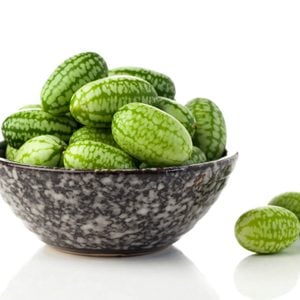
Watermelon Gherkin
They might look like tiny pickles, but they’re actually sweet and sour fruit. Watermelon gherkins are the size of grapes and taste like cucumbers with a hint of sour fruitiness. These tiny watermelon are native to Mexico and Central America, but are often seen at American grocery stores or farmers markets in late summer.
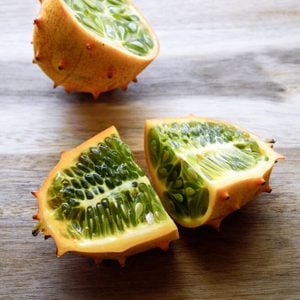
Horned Melon
This orange fruit has rough, spiky skin and looks like an alien seedling. Don’t be intimidated—the fruit inside is sweet and fresh with a flavor most similar to cucumber or kiwi. The slimy seeds are a delicious addition to fruit salad. To eat, just slice the fruit in half, scoop out the fruit and serve!
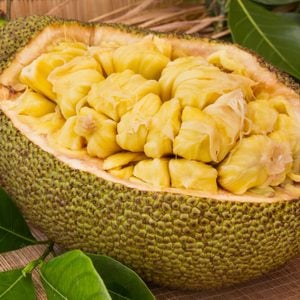
Jack Fruit
Surprisingly enough, jack fruit is actually used most commonly in savory applications. This meaty fruit has a neutral flavor and is similar in consistency to chicken or steak. It tends to take on the flavor of the sauce it’s paired with and is particularly delicious when used in barbecue dishes. To open it, just slice the fruit in half and remove the meaty fruit from the inside.
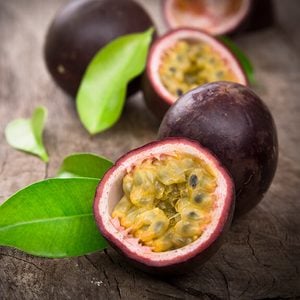
Passion Fruit
This is a tropical fruit. It’s dark purple on the outside and yellow on the inside with lots and lots of seeds. We eat the pulp and can use the juice for things like fruity cocktails.
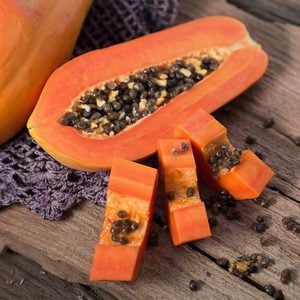
Papaya
Also called papaw or pawpaw, papayas are typically orange in color with black seeds. It’s typically eaten raw, like in this pineapple-papaya slaw. Since it has a lot of pectin, it’s a great ingredient to put in jellies, too.
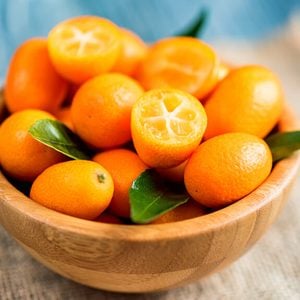
Kumquat
This tiny piece of citrus is about the size of an olive but tastes and looks like an orange. Unlike most fruits, the rind has a sweet flavor and the fruit is slightly sour. Kumquats are a delicious addition to stuffings or poultry dishes, simply cut the fruit into thin slices or chop into fine pieces.
